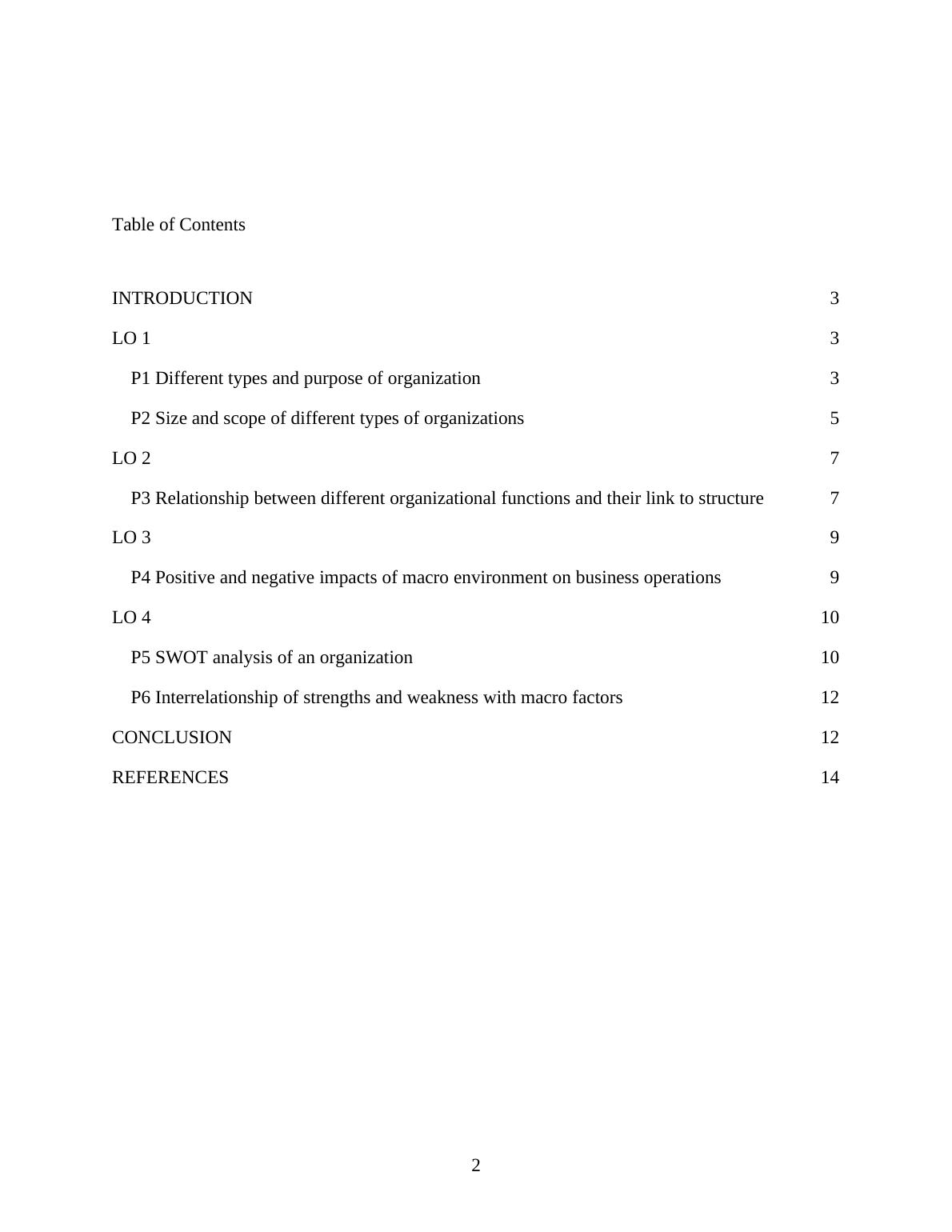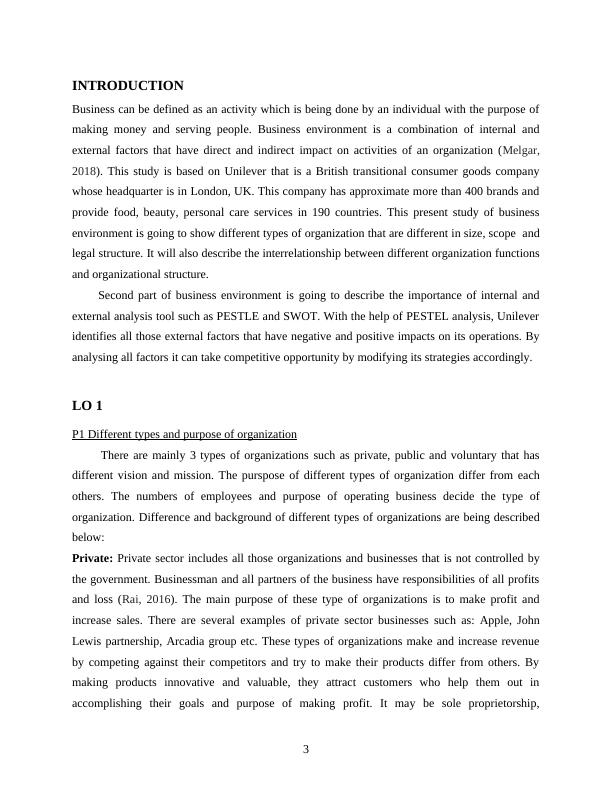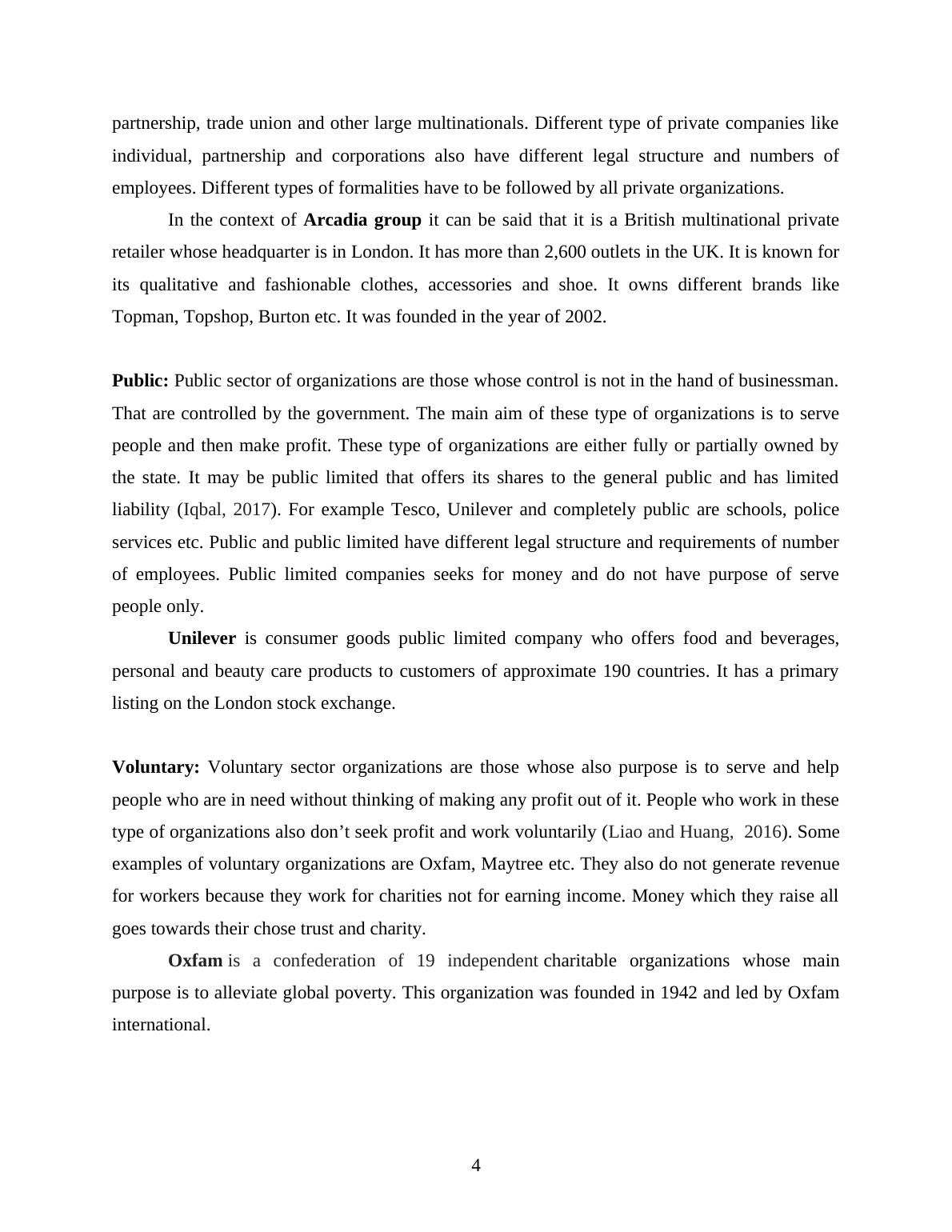Business and the Business Environment - Unilever Assignment
Added on 2021-02-19
13 Pages3954 Words65 Views
Business and the BusinessEnvironment1

Table of ContentsINTRODUCTION3LO 13P1 Different types and purpose of organization3P2 Size and scope of different types of organizations5LO 27P3 Relationship between different organizational functions and their link to structure7LO 39P4 Positive and negative impacts of macro environment on business operations9LO 410P5 SWOT analysis of an organization10P6 Interrelationship of strengths and weakness with macro factors12CONCLUSION12REFERENCES142

INTRODUCTIONBusiness can be defined as an activity which is being done by an individual with the purpose ofmaking money and serving people. Business environment is a combination of internal andexternal factors that have direct and indirect impact on activities of an organization (Melgar,2018). This study is based on Unilever that is a British transitional consumer goods companywhose headquarter is in London, UK. This company has approximate more than 400 brands andprovide food, beauty, personal care services in 190 countries. This present study of businessenvironment is going to show different types of organization that are different in size, scope andlegal structure. It will also describe the interrelationship between different organization functionsand organizational structure.Second part of business environment is going to describe the importance of internal andexternal analysis tool such as PESTLE and SWOT. With the help of PESTEL analysis, Unileveridentifies all those external factors that have negative and positive impacts on its operations. Byanalysing all factors it can take competitive opportunity by modifying its strategies accordingly.LO 1P1 Different types and purpose of organizationThere are mainly 3 types of organizations such as private, public and voluntary that hasdifferent vision and mission. The purspose of different types of organization differ from eachothers. The numbers of employees and purpose of operating business decide the type oforganization. Difference and background of different types of organizations are being describedbelow:Private: Private sector includes all those organizations and businesses that is not controlled bythe government. Businessman and all partners of the business have responsibilities of all profitsand loss (Rai, 2016). The main purpose of these type of organizations is to make profit andincrease sales. There are several examples of private sector businesses such as: Apple, JohnLewis partnership, Arcadia group etc. These types of organizations make and increase revenueby competing against their competitors and try to make their products differ from others. Bymaking products innovative and valuable, they attract customers who help them out inaccomplishing their goals and purpose of making profit. It may be sole proprietorship,3

partnership, trade union and other large multinationals. Different type of private companies likeindividual, partnership and corporations also have different legal structure and numbers ofemployees. Different types of formalities have to be followed by all private organizations.In the context of Arcadia group it can be said that it is a British multinational privateretailer whose headquarter is in London. It has more than 2,600 outlets in the UK. It is known forits qualitative and fashionable clothes, accessories and shoe. It owns different brands likeTopman, Topshop, Burton etc. It was founded in the year of 2002.Public: Public sector of organizations are those whose control is not in the hand of businessman.That are controlled by the government. The main aim of these type of organizations is to servepeople and then make profit. These type of organizations are either fully or partially owned bythe state. It may be public limited that offers its shares to the general public and has limitedliability (Iqbal, 2017). For example Tesco, Unilever and completely public are schools, policeservices etc. Public and public limited have different legal structure and requirements of numberof employees. Public limited companies seeks for money and do not have purpose of servepeople only.Unilever is consumer goods public limited company who offers food and beverages,personal and beauty care products to customers of approximate 190 countries. It has a primarylisting on the London stock exchange.Voluntary: Voluntary sector organizations are those whose also purpose is to serve and helppeople who are in need without thinking of making any profit out of it. People who work in thesetype of organizations also don’t seek profit and work voluntarily (Liao and Huang, 2016). Someexamples of voluntary organizations are Oxfam, Maytree etc. They also do not generate revenuefor workers because they work for charities not for earning income. Money which they raise allgoes towards their chose trust and charity. Oxfamis a confederation of 19 independentcharitable organizations whose mainpurpose is to alleviate global poverty. This organization was founded in 1942 and led by Oxfaminternational.4

End of preview
Want to access all the pages? Upload your documents or become a member.
Related Documents
Business and the Business Environmentlg...
|14
|3421
|99
Business and business environment INTRODUCTION 3 LO 1 3 P1 Difference types and scope of organisation 5 LO 2 6 P3 Relationship between different types of organisational functions and their link to buslg...
|13
|3779
|108
Business and Business Environment: Types, Functions, and Impactlg...
|14
|4169
|97
Business and business environment assignment | LEGOlg...
|12
|3676
|34
BUSINESS AND BUSINESS ENVIRONMENT TABLE OF CONTENTSlg...
|15
|4448
|499
Business and Business Environmentlg...
|14
|3663
|255
